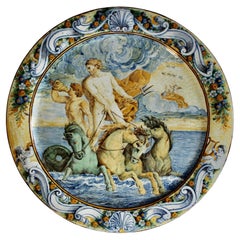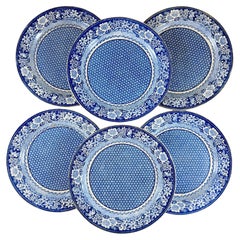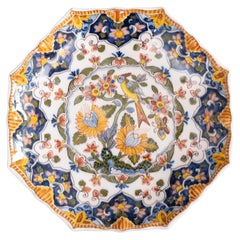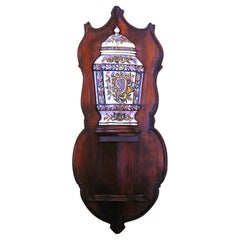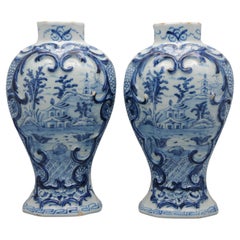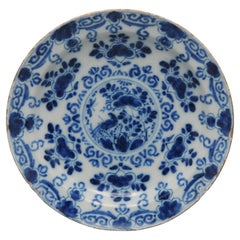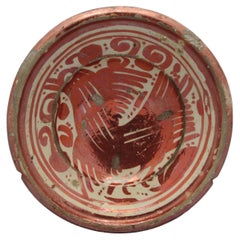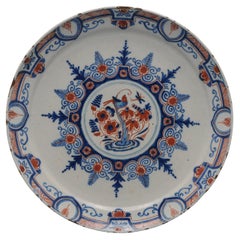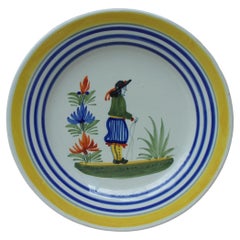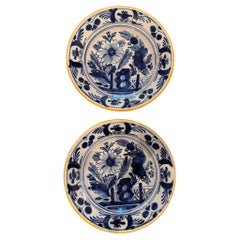Delft and Faience
Late 18th Century Dutch Rococo Antique Delft and Faience
Earthenware, Delft, Faience
Early 18th Century Dutch Chinoiserie Antique Delft and Faience
Earthenware, Delft, Faience
17th Century Spanish Baroque Antique Delft and Faience
Earthenware, Faience, Luster, Maiolica
Early 18th Century Dutch Chinoiserie Antique Delft and Faience
Earthenware, Delft, Faience
1950s French French Provincial Vintage Delft and Faience
Faience
Early 19th Century Dutch Antique Delft and Faience
Delft
Early 1800s Dutch Rococo Antique Delft and Faience
Delft
20th Century French Delft and Faience
Faience
18th Century Dutch Antique Delft and Faience
Ceramic
Mid-20th Century French Mid-Century Modern Delft and Faience
Faience
Late 19th Century French Antique Delft and Faience
Faience
Mid-19th Century French French Provincial Antique Delft and Faience
Earthenware
Early 1900s French Art Nouveau Antique Delft and Faience
Earthenware
18th Century Dutch Baroque Antique Delft and Faience
Delft
18th Century French Chinoiserie Antique Delft and Faience
Earthenware, Faience, Maiolica
20th Century Dutch Baroque Revival Delft and Faience
Earthenware, Delft
1960s Danish Vintage Delft and Faience
Faience
Early 20th Century Spanish Islamic Delft and Faience
Earthenware, Faience, Luster, Maiolica
Mid-18th Century Dutch Antique Delft and Faience
Delft, Faience
Mid-18th Century Dutch Chinoiserie Antique Delft and Faience
Earthenware, Delft, Faience
18th Century Dutch Chinoiserie Antique Delft and Faience
Earthenware, Delft, Faience
Early 1900s French Art Nouveau Antique Delft and Faience
Ceramic
Mid-18th Century French Antique Delft and Faience
Faience
Late 17th Century Dutch Dutch Colonial Antique Delft and Faience
Earthenware
Early 18th Century Dutch Chinoiserie Antique Delft and Faience
Earthenware, Delft, Faience
Late 18th Century Dutch Chinoiserie Antique Delft and Faience
Earthenware, Delft, Faience
Mid-18th Century Dutch Chinoiserie Antique Delft and Faience
Earthenware, Delft, Faience
Early 20th Century Italian Renaissance Revival Delft and Faience
Majolica
Late 18th Century Dutch Chinoiserie Antique Delft and Faience
Earthenware, Delft, Faience
19th Century French French Provincial Antique Delft and Faience
Faience
Late 19th Century French Antique Delft and Faience
Ceramic, Faience
17th Century Dutch Baroque Antique Delft and Faience
Earthenware, Delft
18th Century Dutch Baroque Antique Delft and Faience
Delft
1890s French Antique Delft and Faience
Faience, Paint
Early 19th Century Antique Delft and Faience
Delft
Early 1900s French French Provincial Antique Delft and Faience
Faience
Mid-18th Century Dutch Chinoiserie Antique Delft and Faience
Earthenware, Delft, Faience
1940s Portuguese Country Vintage Delft and Faience
Ceramic, Delft
Late 19th Century Dutch Baroque Antique Delft and Faience
Ceramic
19th Century French French Provincial Antique Delft and Faience
Faience
Late 19th Century French French Provincial Antique Delft and Faience
Earthenware
Mid-20th Century French French Provincial Delft and Faience
Ceramic
1870s French Japonisme Antique Delft and Faience
Faience
Late 17th Century Dutch Chinoiserie Antique Delft and Faience
Pewter
Late 18th Century Rococo Antique Delft and Faience
Earthenware, Faience, Delft
Late 18th Century Dutch Chinoiserie Antique Delft and Faience
Earthenware, Delft, Faience
Late 18th Century Rococo Antique Delft and Faience
Earthenware, Faience
Early 18th Century Antique Delft and Faience
Delft
Late 19th Century Antique Delft and Faience
Faience
1880s Italian Renaissance Antique Delft and Faience
Majolica
18th Century Dutch Antique Delft and Faience
Delft, Faience
1930s French Art Deco Vintage Delft and Faience
Ceramic
Late 18th Century French French Provincial Antique Delft and Faience
Earthenware
Early 20th Century French Delft and Faience
Majolica
1950s Dutch Vintage Delft and Faience
Delft
Mid-18th Century German Baroque Antique Delft and Faience
Ceramic, Faience, Majolica
20th Century French Delft and Faience
Faience
1760s Dutch Rococo Antique Delft and Faience
Ceramic, Delft, Faience
Early 17th Century Dutch Antique Delft and Faience
Ceramic
17th Century Dutch Baroque Antique Delft and Faience
Earthenware, Delft
Antique Delft Pottery and Faience for Sale on 1stDibs
The unique graceful design and classic style of antique Delft pottery and faience make these pieces an exceptional addition to any dining room.
The popularity of the blue-and-white porcelain developed in 14th-century China inspired Delft and faience pottery in Europe. The global expansion of trade through the Dutch East India Company led to the import of numerous examples of Chinese porcelain, resulting in the creation of Dutch Delftware, which is the term generally used to describe the tin-glazed earthenware that Dutch potters used. There were other imitations of Chinese porcelain produced by ceramicists throughout Europe, but Delftware was the most successful. This iconic tradition — the subject of a 2020 exhibition at the Kunstmuseum den Haag — resembled Chinese porcelain but was more affordable.
True blue Delftware originates only from a single location: Delft in the Netherlands. These precious pieces pair well with French faience. Unlike Delft plates, Delft vases and other pieces of Delftware, French faience utilizes a lead-and-tin glaze. This earthenware has roots in late-16th-century France. French Provincial Delft and faience tend to feature snow-white lacquered surfaces with colorful painted images or floral designs.
In terms of elegance and versatility, Baroque Delft and faience always impress. The most extravagant and boldly hued pieces are Rococo Delft and faience. Plates, tureens and other objects made in this style are frequently ornate and intricately decorated, making them ideal for display. Modern Dutch design masters often incorporate vintage decor into their contemporary designs, and Delftware items are a popular choice.
Browse antique Delft pottery and faience now on 1stDibs.

